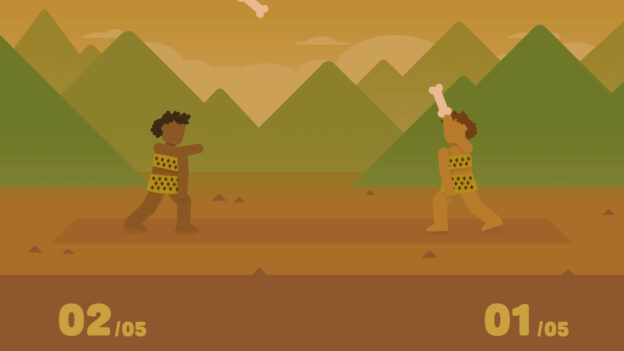Pikmin 4 Review – Review

Those who do not embrace Dandori cannot survive this planet… But if they grow the leaves… they will thrive.
When Pikmin 3 first released on Wii U in 2013, it felt more like a sequel to Pikmin 1 than to Pikmin 2. The pressure of a limited number of playable days returned, caverns were gone, and even the purple and white types of Pikmin introduced in 2 were nowhere to be found. Now, a decade later, Pikmin 4 seems to be doing the same thing with Pikmin 2; caverns are back, the limited number of days is gone, and the story is about collecting treasures to fulfill currency quotas. In many ways Pikmin 4 feels like a stealth remake of 2, and it manages to elevate ideas and mechanics from the franchise’s former middle child to a new level, ironing out the flaws and introducing more new ideas to make an experience that feels like a new peak in quality for the series.
The basics of Pikmin are the same as ever: rather than directly fighting and completing tasks yourself, you are ordering around a group of tiny creatures called Pikmin that gain strength in numbers. They can fight, they can carry things, they can build bridges—pretty much anything a playable character in a video game needs to accomplish. The only thing they can’t do is make decisions for themselves; that’s where you come in.
Pikmin 4 follows the traditional structure of the franchise by tying gameplay to a day/night cycle where you must drop what you’re doing and return to base when the sun sets. This time around, that base isn’t empty anymore, and an entire crew of companions known as the Rescue Corps is running operations while you’re away. The Rescue Corps serve as recurring characters throughout the game’s story, but they also offer various gameplay functions such as providing mechanical upgrades and offering side quests for you to complete. The whole experience feels a bit more video game-y, and while it does sand down the uniqueness of the Pikmin franchise a little bit, it adds a nice flow to your progression that helps keep the day/night cycle from feeling as vestigial as in Pikmin 2. Every trip back to the base is a chance to upgrade your abilities and check in on your friends, making the end of a day something to look forward to after spending a ton of time exploring caverns.
Speaking of caverns, they’ve been substantially improved from Pikmin 2 with a small but significant change: the caverns are no longer randomly generated, and everything is placed with intention by the developers who expect you to have particular options when tackling challenges. This vastly improves the flow of underground exploration, but it also lightens the impact of some of the crueler pranks that the game can play on you with falling bombs and surprise enemy spawns. Since the caves have bespoke design to them you’ll never find yourself in a scenario where one of those pranks feels like it couldn’t have been avoided, and the added rewind function that can quickly take you back to a few minutes earlier can make it less frustrating when a true disaster befalls your party. Be honest, hardcore fans: you always hit the reset button when your Pikmin were wiped out in Pikmin 2’s caves anyway, didn’t you?
The biggest addition to Pikmin 4’s gameplay is the presence of Oatchi, a doglike companion who can act as an independent player character or in place of your Pikmin depending on what you need him to do. Oatchi fulfills an awful lot of quality of life features in Pikmin 4 as he can not only take on the role of a captain or a Pikmin, but can also be given commands to search for important things such as treasures, hidden resources, or even missing Pikmin. He’s not quite as versatile as the trinity of playable captains in Pikmin 3 (and sadly cannot be controlled by a co-op player like the three captains could) but clever use of his abilities will be crucial to succeed in the game’s Dandori challenges.
“Dandori” is the game’s name for acting efficiently and strategically, and there are many distinct challenges in the game that require you to use Dandori well. Special caverns where you race against the clock to collect treasures as quickly as possible in a limited time and splitscreen battles where you compete with an opposing captain to collect the most loot are the flagship Dandori challenges that will scratch the itch of long-time players who miss the time pressure of collecting ship parts in Pikmin 1 and finishing the game in as few days as possible. Even though Dandori didn’t have a name in-universe until Pikmin 4, it was always the part of the Pikmin franchise that I enjoyed the most, and many of the late-game challenges demand an extreme understanding of how to best command Oatchi and your Pikmin in order to barely scrape by and receive the best rewards.
One big part of the game falls flat though, and it is unfortunately one of the additions that sounded the most interesting going in. For the first time in the franchise, Pikmin 4 allows you to venture out at night in order to gather unique resources that can only be found in the dark while fighting off monsters that are far more aggressive than usual. I imagined the night time gameplay as something that you could choose to do instead of heading back to base at the end of the day that allows you to take risks in order to gain great rewards, but the reality is much less exciting.
Night time missions are chosen from a menu at the base, and they take up an entire day on their own. These missions take on a tower defense format where you must protect structures called Lumiknolls with the help of ghostly Glow Pikmin. The aesthetics of night time in the Pikmin world can feel unsettling and threatening, but the actual gameplay is simple to the point of being boring. Glow Pikmin are more powerful than regular Pikmin since they can stun enemies and deal huge damage with a burst attack and automatically teleport to you when left idle, trivializing both combat and strategy. The nighttime missions quickly blend together into feeling like busy work since you’ll be doing a lot of them if you want to receive their important rewards, and the utter simplicity of the challenge leaves little room for thinking on your feet and improvising. It is technically possible to finish the game while doing a bare minimum of nighttime missions, but you’ll be locking yourself out of a substantial amount of side content as a consequence.
Pikmin 4 is everything I could’ve wanted from a new Pikmin game and more. It is simultaneously a return to form with a heavy focus on Dandori and also a leap forward with entirely new mechanics and big improvements to returning mechanics. There are some flaws—nighttime missions are a drag and the early tutorials are dreadfully slow—but those warts don’t outweigh everything Pikmin 4 manages to achieve. This is a new standard for Pikmin; all we can do now is hope it doesn’t take another ten years for Pikmin 5.




